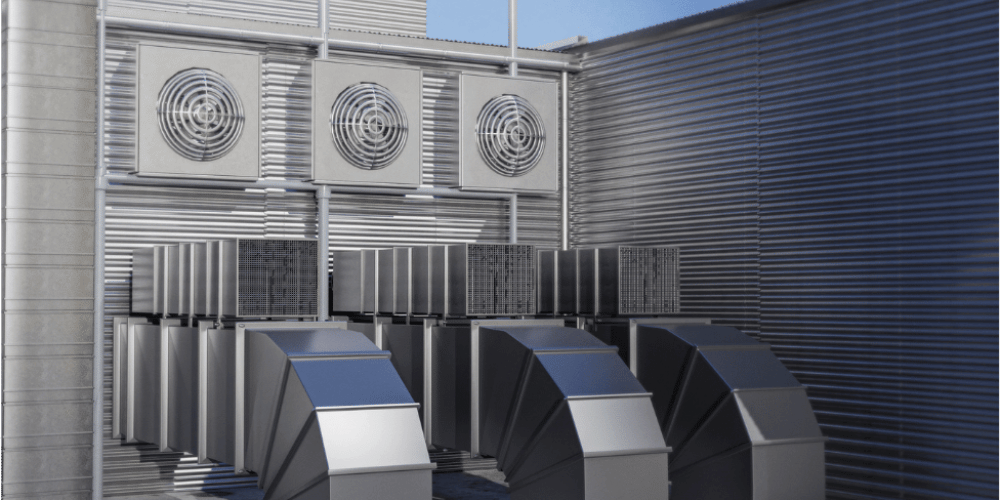The Importance of Proper Ventilation in Laboratory Spaces

Do you find yourself walking into a laboratory space and feeling like you can’t catch your breath?
The reality is that proper ventilation in laboratories is much more than simply feeling comfortable – it’s essential to the preservation of research experiments, as well as the safety and wellbeing of anyone who inhabits these spaces.
No matter if you’re visiting or working within a lab environment, maintaining a balanced level of ventilation has become crucial in today’s modern landscape. Read on for our exploration into why this matters now more than ever before.
Why Proper Ventilation is Essential for Laboratory Safety and Productivity
Laboratory ventilation is an essential component when it comes to safety and productivity in a lab environment. Without an effective ventilation system, laboratory workers may be exposed to dangerous levels of fumes, airborne particles, and other hazardous contaminants which can have serious implications on their health.
Proper ventilation reduces the risk of laboratory fires or explosions by helping to maintain ideal temperature and humidity levels. Well-ventilated labs are often quieter due to reduced noise pollution from fans or other devices. It also helps to improve working conditions by creating a pleasant atmosphere filled with fresh air that encourages employee well-being and productivity.
The Role of Fume Hoods in Maintaining Proper Ventilation in Laboratories
Fume hoods play a crucial role in laboratory safety, as they help to manage air quality by providing adequate ventilation. Fume hoods are designed to capture harmful gasses, fumes, and vapors while ensuring a constant flow of clean air throughout the laboratory space.
By maintaining the pressure gradient between the fume hood and the workspace environment, fume hoods play an important role in protecting researchers from hazardous airborne particles. In a fume hood-equipped laboratory, the fume hood is placed at the prime location for extraction so that proper airflow is always maintained; this ensures that hazardous elements are eliminated as swiftly as possible and maximum efficiency is achieved.
The impact of Indoor Air Quality on Laboratory Workers’ Health
Laboratory workers need clean, breathable air to ensure safety and health. Research has found that a minimum of 6 air changes per hour (ACH) is necessary to bring fresh air into the air space of a laboratory so as to reduce any incidents caused by poor air quality. HEPA filters can also help keep laboratory-generated contaminants from entering the general workplace, making the workplace safer for all users.
Laboratory workers need assurance that their workplace standards are sufficient and up to date in order to maintain comfortable and healthy working conditions. Ensuring proper ventilation and meeting established criteria for laboratory air quality can make a significant difference in laboratory worker’s health outcomes.

Meeting OSHA Standards for Laboratory Ventilation
OSHA regulations provide detailed guidance on laboratory ventilation requirements to ensure the safety of laboratory workers. These regulations require that proper filtration, exhaust systems and pressure controls are in place to properly draw airborne contaminants from the space, ensuring then that volatile organic compounds, smoke, heat and humidity are removed from the workspace.
OSHA’s safety standards also account for sufficient atmospheric air changes each hour, which transport air into the room for respiration purposes. Laboratory workers can locate OSHA guidelines to learn more about specific OSHA-compliant ventilation requirements for their lab workplace.
Ensuring Optimal Airflow in Laboratories for Equipment and Workers
Ensuring optimal airflow in laboratories is essential to protecting the health and safety of equipment and personnel. Not only does it help to reduce the risk of contamination and fire hazard, but it also increases energy efficiency, resulting in lowered operational costs.
Laboratory airflow should be maintained by utilizing appropriately designed systems that are carefully checked for effectiveness on a regular basis. Doing so can help guarantee optimal performance from both workers and expensive lab equipment. By equipping laboratories with an effective airflow system, you can keep personnel safe and potentially save time and money in the long run.
Preventing and Managing Laboratory Ventilation Issues
Properly managing a laboratory’s ventilation system can drastically reduce the risk of hazardous gasses being released into the lab environment. It can also help maintain comfortable climate and humidity levels while conserving energy.
Lab workers should assess their facility to understand which areas need more robust ventilation, and to identify sources of contaminants, such as:
- chemicals,
- solvents, or
- exhaust fumes.
Installing HEPA-grade filters in intake vents can capture airborne particles, ensuring clean air circulation and reducing odors.
Regular maintenance of fans, ductwork and controls is necessary to ensure safe operations and diagnose any underlying problems or malfunctions quickly. By taking these preventive steps, lab workers can help mitigate any challenges associated with laboratory ventilation issues safely and effectively.
While the need for laboratory ventilation might seem like a new development in our world, the truth is that it’s always been an important aspect of anyone working with chemicals or other dangerous materials. With the increase in research being conducted around the world, lab ventilation has become even more crucial in preserving experiments and keeping people safe.
When representing our clients, we take ventilating lab spaces very seriously and have a team of experts who can help you find the perfect balance for your needs. If you’re looking for a laboratory, be sure to contact us today – we would love to show you what we have to offer.
Upgrade your laboratory space now and see the difference in your research!




